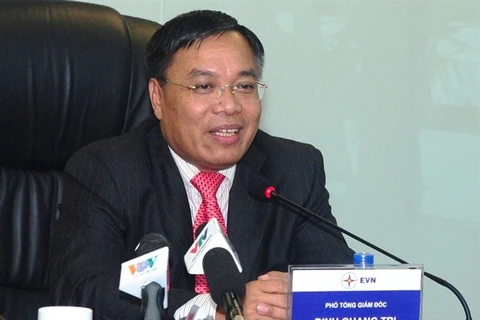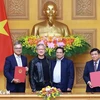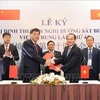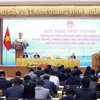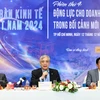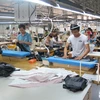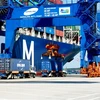Hanoi (VNA) - Vietnam’s retail sector is forecast to be stable in the coming years, attracting investment from many foreign enterprises thank to its large population, brighter economic outlook and greater purchasing power.
This was announced by experts participating in a survey of Vietnam Report Company (VNR), released in Hanoi on October 31.
Another study by HSBC, titled "ASEAN Connected 2016", showed that Vietnam’s middle class has the fastest growth rate in Southeast Asia and is expected to increase to 33 million by 2020.
Consumer spending is on the rise thanks to an increasingly open economy with rising employment, business and income opportunities. Vietnam is currently ranked the sixth largest economy in the ASEAN region, following Singapore, Malaysia, the Philippines, Indonesia and Thailand.
The General Statistics Office said Vietnam’s retail revenue in 2016 increased by 10.2 percent, faster than the 9.8 percent in 2015. According to the Trade Research Institute under the Ministry of Industry and Trade, in the 2016-20 period, Vietnam’s retail trade growth rate will reach 11.9 percent per year and market size will be some 179 billion USD by 2020.
In addition, the Government’s permission to foreign retailers to establish businesses with 100 percent foreign capital since 2015 has made Vietnam one of the world’s leading investment attractions, especially in the field of modern retail.
In recent years, large developers such as Aeon (Japan), Lotte (the Republic of Korea) and Central Group (Thailand) have expressed great interest, gradually expanding their presence through M&A deals and announcing long-term plans for the market.
However, the local retail market has seen fierce competition and domestic firms have been forced to adopt new strategies to maintain market share and improve their reputation to compete with international competitors who have superior advantage in terms of capital, technology, experience and personnel.
The demand of consumers in the future is expected to change significantly (towards high quality products with smarter spending), which is also a difficult issue for retailers. Retailers need to pay attention to product diversification to meet the needs of different customer groups.
According to VNR’s online survey, the majority of consumers said diversification of goods was what attracted them to certain retailers.
Retailers are changing the way they sell goods -- from traditional to modern and online channels -- to serve growing consumer needs. Targeting the customer and developing a compatible business strategy requires retailers to invest a lot of resources. However, with proper investment, retailers can take advantage of opportunities, build and protect their reputation, thereby attracting customers and indirectly improving business results in the future.
This was VNR’s assessment, under its Vietnam Retail Sector 2017-20 Research Project Phase 1.
As part of retail industry research, the top 10 most reputable retailers ranking is built on three main criteria -- financial capacity, media credibility and online survey.
Accordingly, Big C, Vinmart and Co.op Mart are three most frequently mentioned retailers. Saigon Co.op is known as the retailer with the largest supermarket chain in Vietnam but is concentrated significantly on developing in the South, while Big C is expanding its brand in all three regions and developing equally. Vinmart, a new entrant, is developing impressively, opening hundreds of convenience stores and dozens of supermarkets in just over two years after entering the market.
In the section of durable goods, such as electronics, refrigeration and jewellery, there are a number of big names such as Dien May Xanh (25 percent), Nguyen Kim (17 percent) and PNJ (13 percent) in consumers’ minds. In 2017, the race of retailers in electronics, gold and precious stones in particular and the durable goods market in general has become fiercer. Several companies have implemented plans to expand the market, opening more sales points in many provinces and cities in Vietnam.-VNA
VNA

